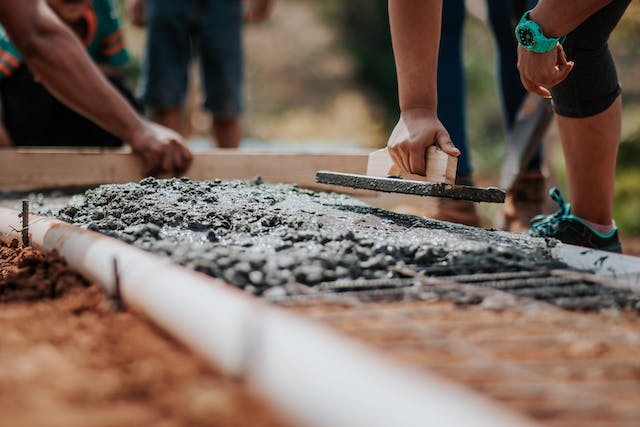Safety on a construction site is one of the most important things we need to consider while working. Running one of those sites is a lot of pressure, so it’s critical to choose the right equipment to keep workers safe. When working with cement, the options might seem limited. Thankfully, they aren’t when you start to look.
If you’re looking to learn more about what cement is, what some of the pieces of equipment you can utilize are, or anything else on this topic, stick around and read this article! I’ll be providing answers for those questions.
What is Cement?
You’ve probably heard the terms concrete and cement used interchangeably, but in reality, they are two separate things. You can discover a bit more about how that works on this website: https://civiltoday.com/civil-engineering-materials/cement/81-cement-definition-and-full-details. For today, I’ll be focusing on the latter and not the former.
It is a binding agent. Most often it is used for stones or other aggregates. Those might be bricks or tiles, for example.
Cement itself is generally a powdery substance. It can be made of a variety of things, but most commonly there is limestone, clay and/or sand, iron ore, and aluminum. In addition to that, there could be chalk, seashells, slate, slag, shale, or marl. The exact makeup isn’t exactly important outside of categorization, so don’t get too hung up on it.
As you can probably imagine, it has a rich history in construction. It has evolved slightly throughout the past few centuries but has not changed too fundamentally. The main goal is to improve its interactions with water.
Understanding the Equipment
I will focus primarily on the ones used in the manufacturing of these products. One such are cement blowers, which play a large role in this process. They can do a few things, so let me explain.
The first thing I’ll cover is pneumatic conveying. These systems involve pipelines that are used to move the products within via air power. So, they blow air, and the stuff inside is moved along the pipe system. Since cement is a type of powder, this type of system can be utilized effectively in a construction context.
So, it might be used for shifting raw materials into a kiln or pre-heating tower. It can also move fuel into the burner. Then, it could package the end product.
Next there is aeration. This is about what it sounds like on the tin: introducing air into a substance or product. So, when mixing the cement, it might be necessary for homogenizing and fluidizing.
They can also be applied in combustion air. If you are wondering what that is, it is air used in igniting certain fuels. Some examples are liquid propane or natural gas.
Working Safely
Another thing I would like to highlight about this topic is the necessity of safety in a work site. Some guidelines are outlined on this page. While it might not seem like a dangerous substance, there are some important dos and don’ts when it comes to cement.
First, you need to properly protect your head and face. Hard hats are a fairly obvious part of this, but you should also make sure to wear goggles. When there is dust or other residue in the air, as there often is on a construction site, shielding our sensitive organs is critical. If some cement powder gets into your eyes, it could be a big problem.
You should also be sure to exercise caution when it comes to lifting heavy objects involved. Our backs can be severely impacted by trying to lift things too heavily. As it happens, that advice to “lift from the knees” is quite applicable. If you do so, you are better cushioning yourself and should be able to lift heavy items with more ease.
As you work, be mindful of any contact your skin has with cement. In some cases, it could result in chemical burns. While not all of them are serious enough to warrant a visit to the hospital, if things do get bad, don’t hesitate to see a doctor. This is especially true if your symptoms of irritation persist across multiple days and/or weeks.
As you can see, a lot goes into working with these substances and operating on a construction work site. Thankfully, while there are risks involved, there are plenty of ways to mitigate them. So long as we follow safety protocols and operate equipment properly, things should be fine.
That does mean that the correct investments should be made in terms of what pieces of equipment are brought in. Once a piece is selected, be sure that it is installed properly. Read any instruction manual included and provide education to any and all employees who will be working with it. If needed, you can label it with safety warnings.

